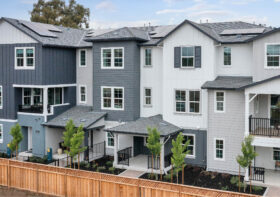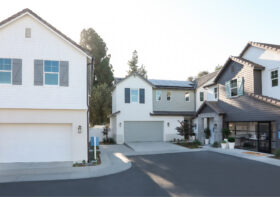Crisis Intervention!

California has identified it as a Crisis — the state’s housing shortage has been the focus of several recent industry events and symposia. Housing is just the tip of the spear when it comes to effects on California’s economy. Transportation policy, jobs /employment trends, environmental concerns, and the out-migration of residents, especially our well-educated youth that can’t afford to stay here, are aligned topics.
It is estimated by the State that there is a 3.5 million unit deficit today and that 180,000 new units are required annually just to keep up with population growth. Today, in a good market, we are building just half that. Adding to the problem has been the loss of 25,000 units in the past two years to record wild fires. Additionally, considering that California is home to 12% of all Americans, it is also home to 25% of the nation’s homeless, with 10% in Los Angeles County alone!
Governor Brown declared a call to action. Our new Governor, Gavin Newsom has made it his number one priority, calling for an additional 3.5 million new units by 2025, an unprecedented rate of development for the State. To build this goal would require an estimated 200,000 additional construction workers and new ways to streamline development and construction processes.
Newsom was elected with fifteen bold housing initiatives, especially Proposition 1 that created $4B over four years for affordable housing and Proposition 2’s “No Place Like Home” millionaire’s tax for $2B to tackle homelessness.
Due to the high cost of housing in the state, many residents are forced to devote more than 50% of their income to shelter, with many devoting even more. Affordable housing is the primary focus of the crisis, but the shortage extends to every income level, requiring a mix of housing types. Affordable housing is defined as units that are priced to 30% of a local area median income (AMI). With the high cost of land and construction, specialized financing, primarily based on California’s Tax Credit Allocation Committee (TCAC) and other sources, is required. Projects must compete for funds, requiring support from local jurisdictions and must meet timely calendar deadlines. Affordable housing also comes with variations of family housing, senior housing, special needs, veteran’s, and permanent supportive housing for the homeless, and requires long-term commitments of at least 55 years of operation and affordability, as well as a program of social services.
Attainable housing is another important area for resolution. Attainable housing does not come with the financing and legal complications of affordable housing, its done entirely within the private sector and may apply more toward for-sale products. Here, innovative site planning to increase densities and architectural designs for smaller, smarter units utilizing efficient construction methodologies are key. Additional topics of off-site construction, modular architecture, ADUs, and low-, medium-, and high-rise solutions that combine affordable components with market-rate units are among the solutions that we are exploring and incorporating into new projects.
Despite the crisis and the ambitious goals for development, there are obstacles to development that include NIMBYs, NOPEs (Not on Planet Earth!), CEQA requirements, entitlement costs, and lawsuits by various groups including unions. In the Bay Area, where teachers cannot afford to live in the communities they serve, developments specifically designed for this group have met considerable opposition. Many Orange County boomers are convinced that their children who grew up there cannot afford to live there. Home ownership has been seen as the foundation of wealth-building but the lack of attainability prevents young people from starting.
In Sacramento, numerous bills and bold initiatives are in progress to fund housing at a large scale, and to simplify and expedite entitlement. The State is also looking at surplus properties for new housing opportunities.
One of the most important new tools is “Transit-Oriented Communities” or TOC. It is described as SB1818 (current State Density Bonus Law) “on steroids”, providing a vehicle to streamline the regulatory and entitlement process on transit priority sites that include affordable housing in their programs, with density and height bonuses (to five stories) reduced parking requirements and other incentives. Two recently completed Bay Area projects were the first to take advantage of this streamlined process with many more on the way.
The Crisis is huge and there are no simple solutions. We cannot fund or regulate our way out of this. We need to create a new mindset in our society. The crisis has reached the point that we cannot calmly talk about it any longer – one speaker passionately compared this crisis to the Civil War or Civil Rights movement. It is an emergency! Status quo won’t solve it.
This article was originally published in the Builder and Developer May issue.




Heriberto
Hi, I desire to subscribe for this blog to obtain most up-to-date updates, so where can i do it please assist.
Elle Schulert
Hello Heriberto,
You can subscribe to our blog on our website. https://www.whainc.com/contact-us
Thanks!